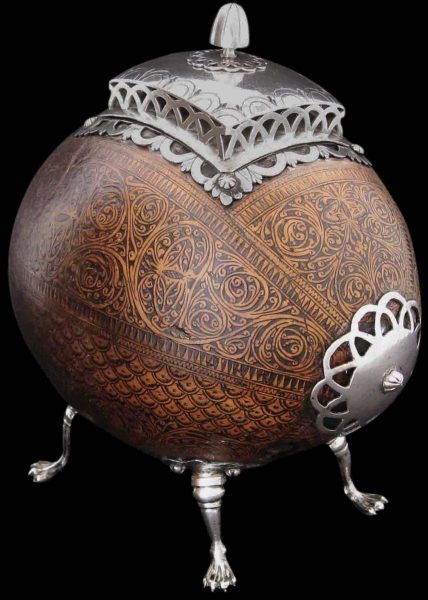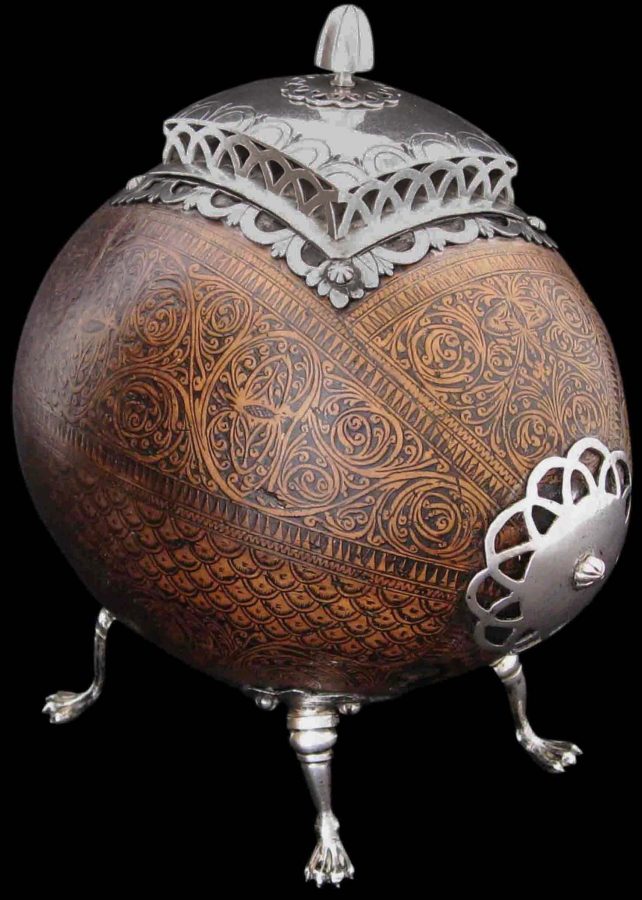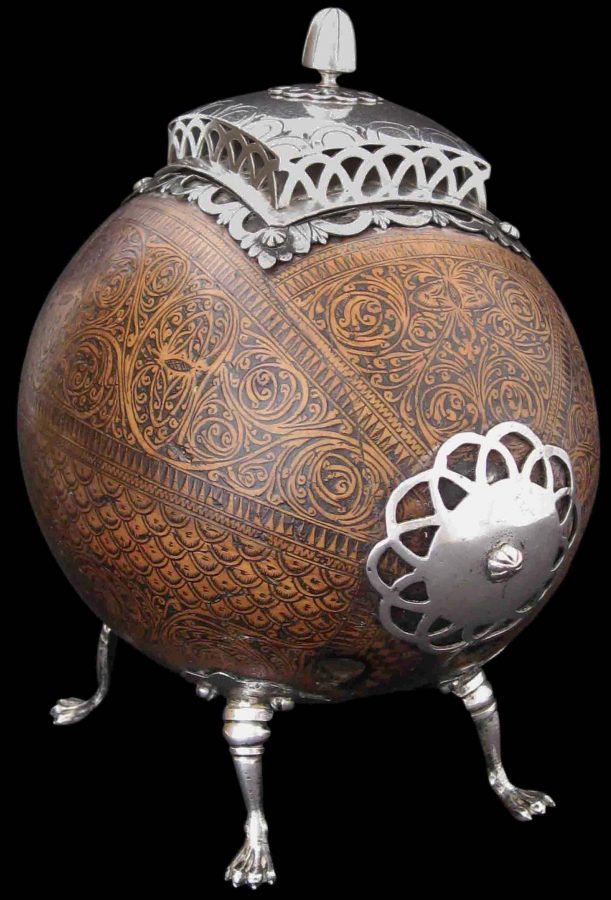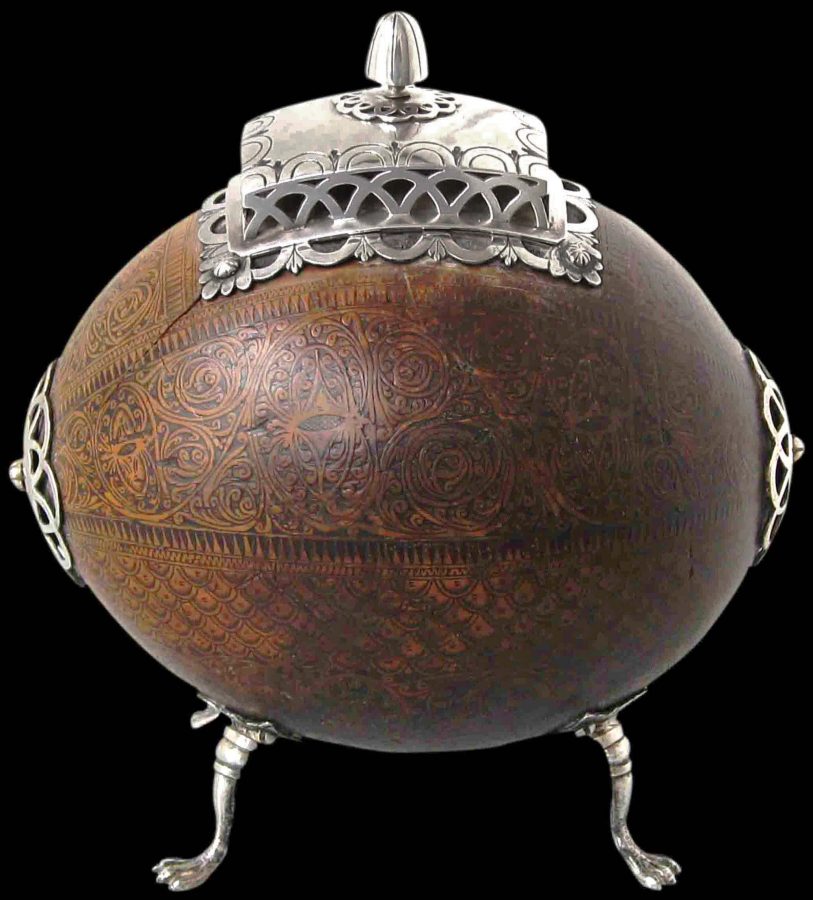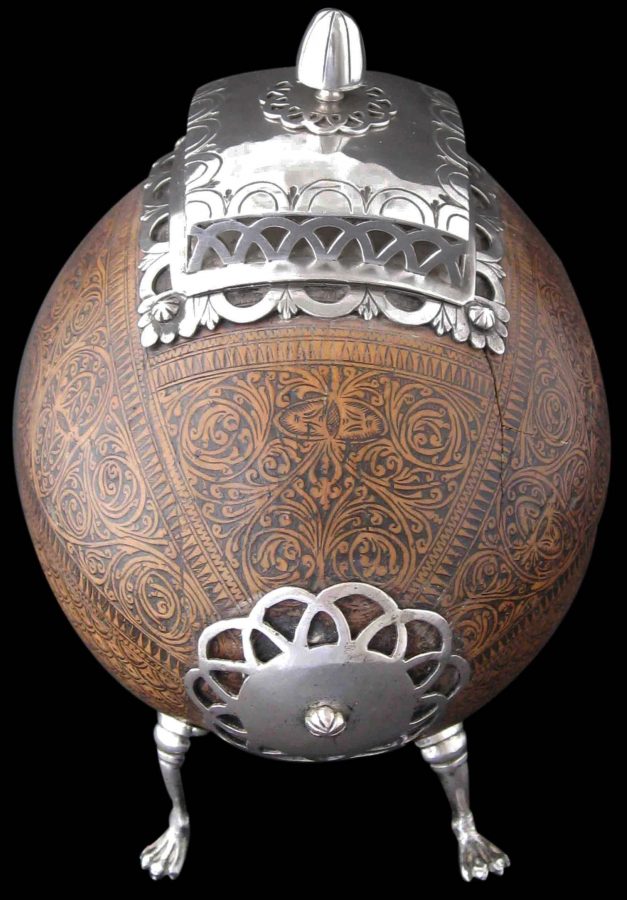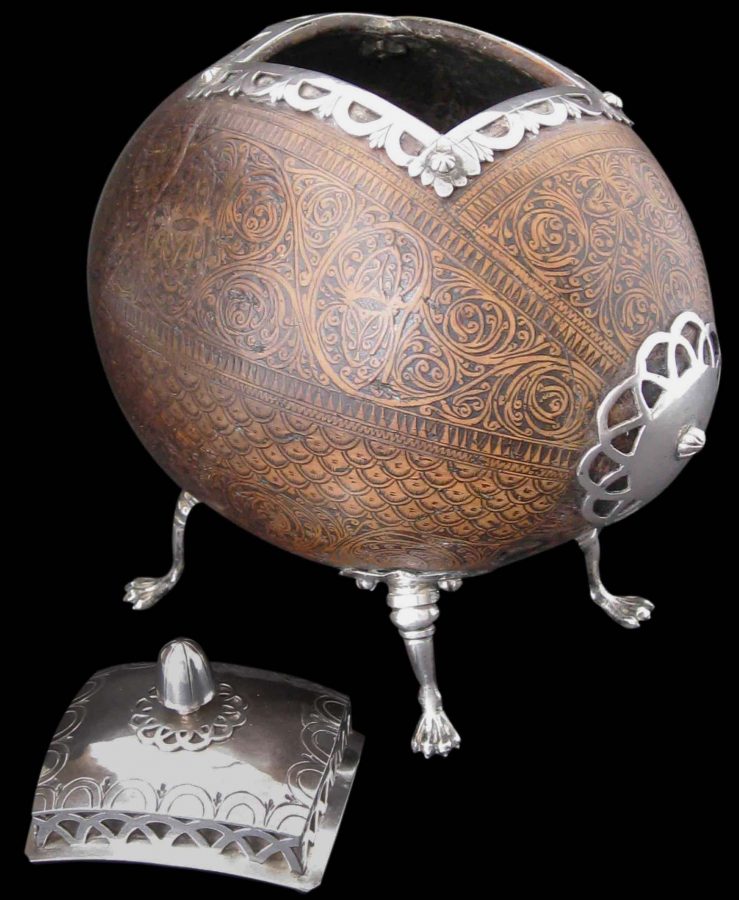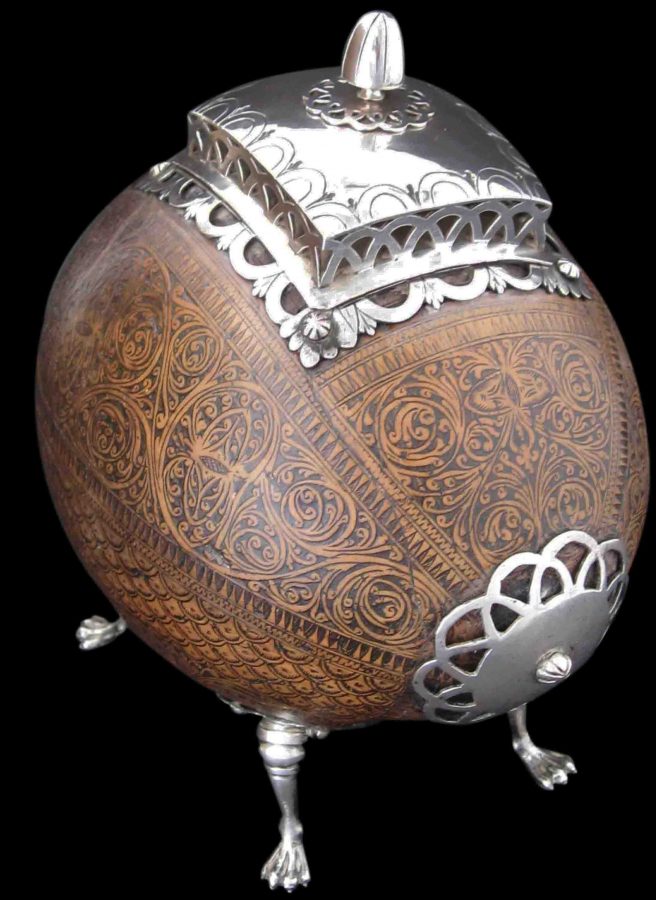Coconut and silver money boxes (alcancia) appeared in the eighteenth century in Spanish colonial central and south America. Few examples have survived. Examples attributed to Guatemala are particularly fine.
This example most probably comes from Guatemala or Mexico. The coconut is very finely engraved on the top half with swirling foliage and again in a band underneath. The very underneath of the nut is engraved with a band of chequerboard motif. A band of fish-scale motif decorates the nut just beneath its middle.
Such engraving work with its tight foliage scrolling is reminiscent of the Islamic artwork of northern Africa and the Malay world of Southeast Asia. Possibly there is a link: the Portuguese and Spanish colonised parts of central and south America and also parts of Southeast Asia.
Mooorish/Moroccan artistic influence from northern Africa with its swirling arabesques and scrolling foliage patterns had become incorporated into the art of the Iberian peninsular and it seems likely that these Islamic North African motifs were carried by the Spanish and Portuguese to their possessions in South America and Asia. (The term ‘alcancia’ is itself derived from an Andalusian Arabic word -كنز or ‘kanz’ is Arabic for ‘treasure’.)
The silver mounts comprise four sturdy solid-cast zoomorphic legs and feet and flower-like openwork disks at either end of the coconut. An openwork border is around the top aperture of the coconut and the lid which fits in and over the aperture. The lid, of finely hammered silver also features openwork, as well as engraving and a solid cast and engraved bud-like finial. The mounts are secured to the nut by means of hand-cut screws or rivets with heads shaped to mirror the bud finial on the lid.
The condition is very good. The coconut has some old, stable but minor cracking in common with most published examples. There are no chips or repairs. Overall, most extant examples are in public collections; few appear to be in private hands.
Several examples are illustrated in Esteras Martin (1994, p. 147, 242, 288). Another is in Mexicaans Zilver/Mexican Silver, (1993)
References
Esteras Martin, C., La Plateria en el Reino de Guatemala, siglos XVI-XIX, Fundacion Albergue Hermano Pedro (Guatemala), 1994.
Mexicaans Zilver/Mexican Silver, Museum voor Sierkunst (Gent), 1993.


